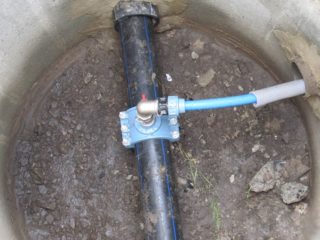Water supply to a private house is an integral part of a comfortable life. Connecting to a central water supply is one of the most convenient and simple ways to provide your own site with clean drinking water without interruption. But you will have to pay for the implementation of the project no less than when organizing other ways of obtaining water.
Benefits of connecting to water supply
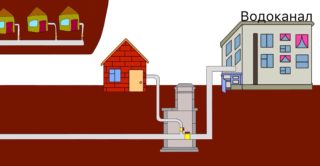
The central water supply provides several advantages to the owner of a private house:
- there is no need to buy a pumping station and arrange a place for its installation;
- no need for drilling, organizing and analyzing water from a well or well;
- water from the central water supply meets sanitary standards and is suitable for human consumption;
- the pipeline network maintains standard pressure;
- water is supplied almost without interruption - short technical breaks are possible.
Each customer has the right to choose independent work or the invitation of specialists to organize a water supply system. However, this entire process must be approved and regulated by decrees of local authorities and the city water utility.
Rules for joining a private house to the central water supply
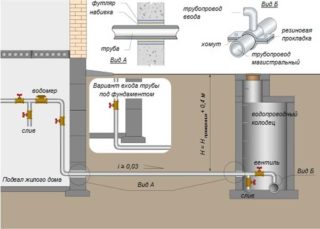
To conduct water from the central water supply to the site with your own hands, certain conditions must be observed. They are regulated by the government decree of July 29, 2013 No. 644. Basic rules governed by the regulation:
- drawing up an approved agreement according to the existing scheme;
- availability of an application for connection, which is submitted to the territorial authorities - the application is considered within 5 days;
- obtaining technical conditions for tapping into the water supply system, which must be strictly observed;
- after receiving the documents, the service verifies them within 3 days, determines the balance of drainage and water supply, technical capability;
- in the presence of incorrectly executed or incomplete documents, the customer receives a notification, within 20 days he must collect and send the missing information;
- if after 20 days this does not happen, the application is canceled.
If everything is done correctly, the territorial authority will issue a permit. Vodokanal draws up a contract within 20 days and sends it to the customer. It specifies the conditions, cost of work and payment.
Water supply services, according to the law, cannot refuse the customer to draw up a contract if technically feasible. If this is not possible, an individual project is created.
Payment is made as follows: 35% within 15 days after drawing up the contract, 50% - within 3 months from the start of work, but not after their completion, and another 15% within 15 days after the signing of the final acts confirming the guarantee of water supply to the house.
Required documents and where to go with them
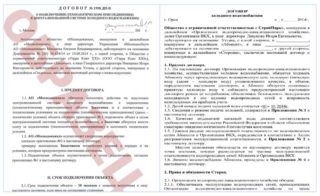
The contract for providing the house with cold water from the central water supply is formed on the basis of an application from the customer or a representative authorized by the owner of the house. The application must contain the following information:
- Subscriber details. Details of the place of residence and registration, as well as full name, copy of passport or ID rights, contact information.If the application is drawn up by a legal entity, the registration number in the State Register, as well as TIN, bank details must be provided. When connecting a legal entity, it is necessary to provide confirmation of the subscriber's right to sign business documents.
- Name and position of the object: address and plan of the private house for which the contract is being prepared.
- Complete information about other sources of water. It should include the volume of water received, the number of owners through whose networks water is taken.
- Information about the kind of activity. Required when connecting standardized spillways.
- Composition, properties and dynamics for the year of sewage disposal. Required if there are any applicable regulations for the customer.
- The area of the site, as well as a description of all objects with detailed characteristics located on the site.
Together with the application, the customer must submit a certain package of documents that allow connecting water to a private house from a central pipeline:
- a copy of the passport, license, other identity document, as well as a power of attorney for the work of a trustee;
- a copy of the property rights to the site connected to the system;
- the area of the irrigated plot, land and related premises, as well as the number of residents;
- documents for NGOs, housing cooperatives, other agreements with resource supplying authorities;
- a copy of contracts for connecting a subscriber to the backbone, if any in the past;
- copies of documents on washing or disinfection of equipment inside the house or on the site;
- sampling site diagram;
- copy to the water meter for verification with the norms;
- a copy of the paper confirming the ownership of the site;
- balance of maximum water consumption;
- positive expert opinion.
You can clarify the list of required papers at the city vodokanal department, in some cases the list may differ.
Drafting a project
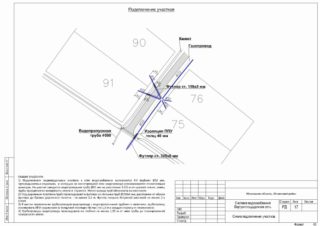
For the design of water supply, it will be necessary to attract specialists - the design group of the water utility. It will consist of the following elements:
- estimate with a list of resources;
- graphic display of the plan and explanatory note;
- customized specification.
The inset is designed according to the following plan:
- The vodokanal is presented with a plan of the site 1: 500.
- Draw up an application for connection to the water supply, attach documents for land tenure and property rights. A month later, they receive a refusal or approval with the connection conditions: pipe diameter, tie-in location.
- They apply to the sanitary station along with the documents received and draw up an application for obtaining an opinion on the insert.
- They draw up a connection project and register it at the sanitary station.
- The communal system, on the basis of documents, issues a permit for construction and land work.
After that, they begin to implement the project, involving licensed services for digging trenches and tapping into the canal pipe.
Center line connection diagram
The connection diagram is determined by the materials used, access points, as well as the place of installation of metering devices. The main point in this scheme is the insert into the central water supply system. It is carried out with special clamps or fittings, adapters.
The tapping point in the central well should be convenient and accessible for technical supervision. Usually it is determined by the specialists of the city water utility.
Sequence of work
The easiest way is to order the organization of a water supply system directly from the employees of the city water utility, but this can be done in other licensed organizations. Connection is carried out in the following order:
Connection by means of an overlay Selecting the method of connecting to the trunk. Most often, the simplest option is used - overlaying clamps on steel or plastic pipes. Additional tools are also used, because the water in the pipes is under pressure.
- Selection of pipeline material.Determine the suitable material for pipes from the point of intake to the house - light, durable, corrosion-resistant low-pressure polyethylene (HDPE).
- Installation of metering devices, purchase of fittings. These are the main elements for connecting the house to the highway.
- Creation of a well from concrete. In the place of the tie-in, a concrete well is made of rings, and next to the house - a hole of the required depth for supplying water to the house.
- Trench creation. With the help of technology, they dig the required depth of the trench, lay the HDPE pipeline and fill it with sand to create a sand cushion, it is possible to use thermal insulation.
- Connecting elements. Through fittings, the pipe is connected to the line along with a shut-off valve and a meter.
After these steps, water is supplied to the house. In the house, the pipeline is bred in series or in parallel.
The piping in the house must be strictly horizontal or vertical, the lines must not cross. When using compression fittings, it is important to ensure easy access to all points. A shut-off ball valve is made at the inlet of each branch. A sand filter is also installed. In this case, the diameter of the branches from the line must be less than the main line.
Connection cost
The cost of the work is largely determined by the length of the water pipes, the material, the depth of the pipeline, as well as the scope of services. Average prices for connecting water from a central water supply to a private house:
- drawing up a project - 5000;
- obtaining technical specifications - up to 5000;
- approval - 10,000 - 12,000;
- cost of materials - from 10,000 rubles with a track length of 10 m;
- tie-in and connection - up to 50,000;
- excavator rental - up to 10,000;
- installation and laying of the network - up to 3000 per 1 running meter.
In cold regions, additional pipe insulation is required, which increases costs by 5-10%. On average, the cost of organizing water supply from the central network cannot be less than 80,000 rubles, but can reach 200,000 - 300,000.
Connecting a house to a centralized water supply network is a task that requires accurate planning and considerable financial investments. If you follow all the steps sequentially and buy quality materials, it is not as difficult to implement as it might seem at first glance.

